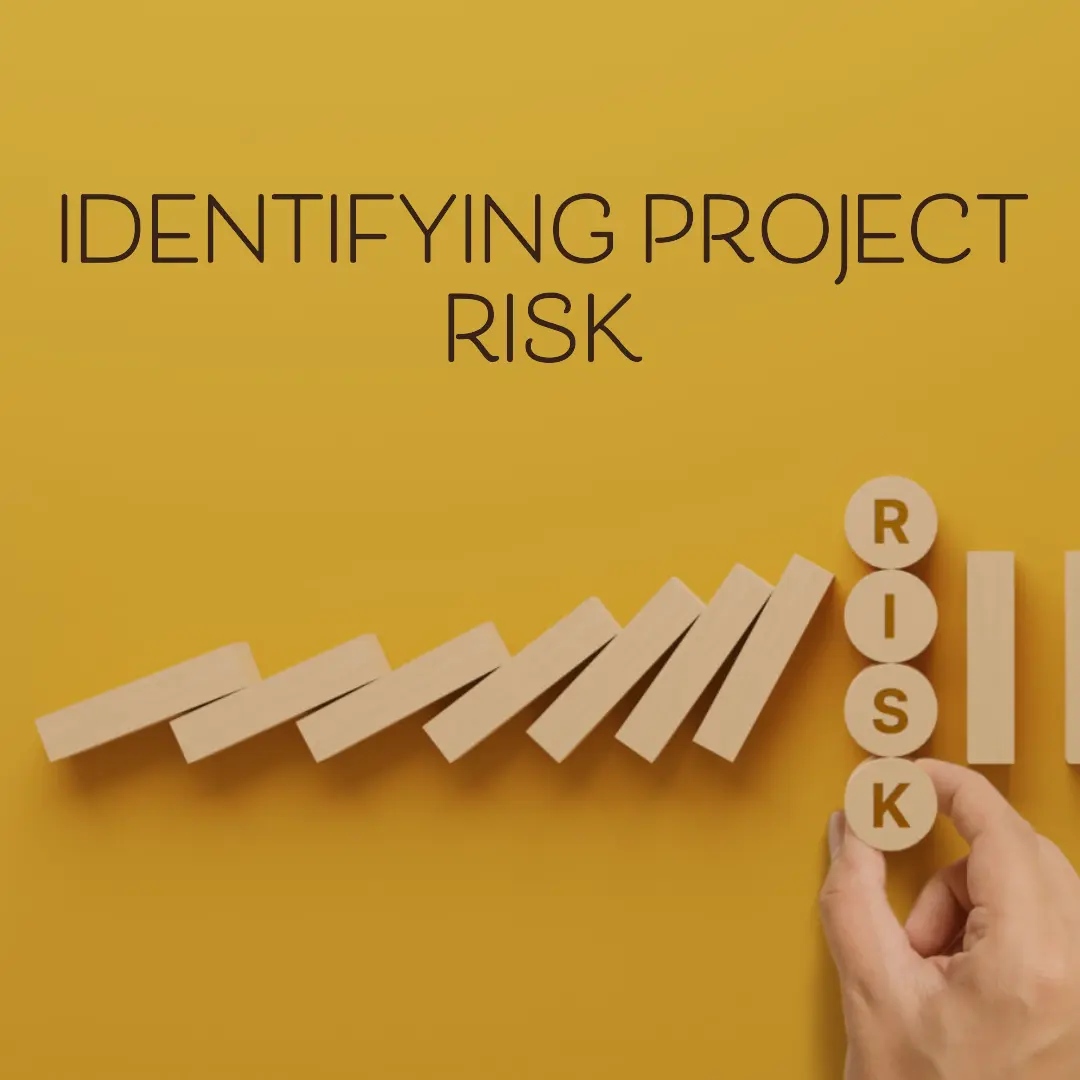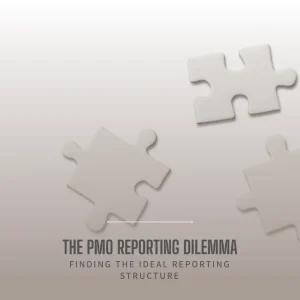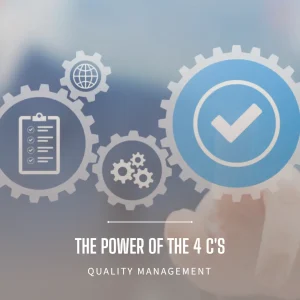To find out how Artificial Intelligence is changing the Project Management landscape, you may enjoy reading this article https://www.shaunstoltz.com/did-artificial-intelligence-just-change-everything-about-project-management/
I. Introduction
Hello, fellow project managers! Today, we’re going to dive into the exciting world of project risk identification. As we all know, managing risks is a crucial aspect of our job, and our ability to identify and mitigate potential issues can make or break the success of our projects. In this blog post, we’ll be exploring various techniques and tools that can help us stay ahead of the curve and ensure that our projects run as smoothly as possible.
But first, let’s talk about the role of the modern project manager in risk management. As project managers, we wear many hats, from planning and organizing to coordinating and directing. One of the most critical aspects of our job, however, is to manage risks. We need to be proactive in identifying potential issues that could derail our projects and put measures in place to mitigate or avoid them. This is where risk identification comes into play.
In the following sections, we’ll discuss the basics of project risk management, various techniques for identifying risks, and some handy tools that can make the process easier and more effective. So, buckle up and get ready for an informative and engaging journey into the world of project risk management!
II. The Basics of Project Risk Management
Before we dive into the nitty-gritty of risk identification techniques and tools, let’s take a moment to lay the foundation by discussing the basics of project risk management. Understanding these fundamentals will help us better appreciate the importance of identifying risks and how doing so can contribute to project success.
A. Definition of project risk
First things first: what is a project risk? Simply put, a project risk is an uncertain event or condition that, if it occurs, can have a positive or negative impact on a project’s objectives. For our purposes, we’ll focus on the negative impacts, as those are the risks we want to identify and manage to keep our projects on track.
B. The importance of risk management in project success
As project managers, we strive to deliver our projects on time, within budget, and according to specifications. However, the road to success is often filled with obstacles and uncertainties. Effective risk management helps us navigate these challenges by allowing us to anticipate potential issues and create contingency plans to address them. By doing so, we can minimize the impact of risks on our project’s performance and increase the likelihood of achieving our goals.
C. The three main components of project risk management
Now that we understand what project risks are and why managing them is vital, let’s break down the risk management process into its three main components:
- Risk identification: This is the process of uncovering, recognizing, and describing risks that could impact our project. It involves collecting information about potential risks, both from internal and external sources, and documenting them for further analysis.
- Risk assessment: Once we’ve identified risks, we need to analyze their potential impact on our project and the likelihood of them occurring. This assessment helps us prioritize risks and determine which ones require immediate attention.
- Risk mitigation: The final step is to develop strategies to manage the identified risks. This could involve reducing the likelihood of a risk occurring, minimizing its impact if it does occur, or developing contingency plans to deal with the consequences.
In the upcoming sections, we’ll focus on the first component—risk identification—and explore various techniques and tools that can help us effectively uncover potential risks lurking in our projects. Stay tuned!
III. Techniques for Identifying Project Risks
Now that we’ve covered the basics of project risk management, it’s time to explore some effective techniques for identifying risks. Remember, the sooner we can identify potential risks, the better equipped we’ll be to handle them and keep our projects on track. Let’s dive into some popular risk identification techniques that can help us get the job done.
A. Brainstorming
- Description of the technique: Brainstorming is a widely-used creative problem-solving technique that involves gathering a group of people to generate a large number of ideas in a short period of time. In the context of risk identification, brainstorming allows team members to share their thoughts and insights on potential risks that could impact the project.
- How to conduct a brainstorming session for risk identification: Start by assembling a diverse group of team members and stakeholders. Encourage open communication and create a non-judgmental atmosphere where participants feel comfortable sharing their ideas. Use prompts, such as “What could go wrong?” or “What external factors could impact our project?” to guide the discussion. Capture all ideas, even the seemingly far-fetched ones, and compile them into a list for further analysis.
- Benefits and limitations: Brainstorming is a quick and cost-effective technique that encourages team collaboration and creativity. However, it may not yield comprehensive results, as the ideas generated are often based on participants’ experiences and perspectives. To address this limitation, consider combining brainstorming with other risk identification techniques.
B. Expert Interviews
- Description of the technique: Expert interviews involve seeking input from individuals with specialized knowledge or experience in a specific area relevant to the project. These experts can provide valuable insights into potential risks that may not be immediately apparent to the project team.
- Identifying and selecting experts for interviews: Look for individuals with a deep understanding of your project’s industry, technology, or processes. This could include external consultants, subject matter experts within your organization, or experienced project managers who have handled similar projects.
- Tips for conducting effective expert interviews: Prepare a list of open-ended questions to guide the conversation and encourage the expert to share their thoughts on potential risks. Listen actively, take notes, and follow up with additional questions to gain a deeper understanding of the issues discussed.
C. Delphi Technique
- Description of the technique: The Delphi Technique is a structured, iterative process that involves gathering input from a panel of experts through a series of questionnaires. The responses are aggregated and shared with the panel, allowing experts to refine their opinions based on the collective feedback.
- Steps to implement the Delphi Technique for risk identification: Begin by selecting a panel of experts and developing a questionnaire focused on potential project risks. Share the questionnaire with the panel and collect their responses. Analyze the feedback, compile a summary, and share it with the experts. Conduct additional rounds of questioning and feedback until a consensus is reached or diminishing returns are observed.
- Benefits and limitations: The Delphi Technique allows for anonymous participation, reducing the influence of group dynamics and encouraging honest feedback. However, it can be time-consuming and requires careful management to ensure the process remains focused and productive.
D. SWOT Analysis
- Description of the technique: SWOT (Strengths, Weaknesses, Opportunities, and Threats) Analysis is a strategic planning tool that can also be used for risk identification. By analyzing a project’s internal strengths and weaknesses, as well as external opportunities and threats, we can uncover potential risks that could impact our project’s success.
- How to conduct a SWOT analysis for risk identification: Create a four-quadrant grid and label each quadrant with one of the SWOT elements. With your project team, brainstorm and list the project’s strengths, weaknesses, opportunities, and threats in the corresponding quadrants. Once completed, review the entries and identify potential risks associated with each element.
- Benefits and limitations: SWOT Analysis is a straightforward and versatile technique that encourages a comprehensive view of the project’s internal and external factors. However, its effectiveness depends on the team’s ability to objectively assess the project and identify relevant risks. To mitigate this limitation, consider supplementing your SWOT Analysis with input from external experts or additional risk identification techniques.
- In the next section, we’ll dive into some useful tools that can further enhance our risk identification process and help us keep our projects on the right track. Stay tuned for more insights and tips on effective project risk management!
IV. Tools for Identifying Project Risks
We’ve explored some powerful techniques for identifying project risks, but did you know there are also specialized tools that can help streamline and organize the risk identification process? In this section, we’ll take a look at a few of these tools and learn how they can complement the techniques we discussed earlier. Let’s get started!
A. Risk Register
- Definition and purpose: A risk register is a centralized document or system used to capture and track identified risks, along with relevant details such as their likelihood, impact, mitigation strategies, and responsible parties. The risk register serves as a valuable tool for monitoring and communicating risks throughout the project’s lifecycle.
- Key components of a risk register: A comprehensive risk register typically includes the following elements: risk description, risk category, probability, impact, priority, mitigation strategies, contingency plans, responsible parties, and risk status. By capturing this information, the risk register allows project managers to effectively prioritize and manage risks.
- How to create and maintain a risk register: Start by setting up a template or system to capture the key components mentioned above. As you identify risks using the techniques discussed earlier, document them in the risk register. Regularly review and update the register to ensure it remains current and reflects changes in the project’s risk landscape.
B. Risk Breakdown Structure (RBS)
- Definition and purpose: A Risk Breakdown Structure (RBS) is a hierarchical representation of potential risks organized by category or source. It provides a visual overview of the risks associated with a project, making it easier for project managers to identify patterns, commonalities, or areas of concern.
- How to develop a Risk Breakdown Structure: Begin by identifying the main risk categories relevant to your project, such as technical, organizational, or external risks. Next, break down each category into subcategories or specific risk sources. Finally, populate the RBS with the risks identified using the techniques discussed in Section III. The result is a structured, organized view of your project’s risks.
- Integrating RBS with other project management tools: The RBS can be a valuable addition to your project management toolkit. Consider integrating it with your project schedule, budget, or Work Breakdown Structure (WBS) to create a comprehensive view of your project’s risks and their potential impacts.
C. Risk Matrix
- Definition and purpose: A risk matrix is a visual tool used to assess and prioritize risks based on their likelihood and impact. It helps project managers quickly identify high-priority risks that require immediate attention and allocate resources accordingly.
- How to create a risk matrix: Start by creating a grid with likelihood on the horizontal axis and impact on the vertical axis. Define the scale for each axis (e.g., low, medium, high) and plot the identified risks on the matrix based on their probability and impact. The resulting matrix highlights the most critical risks in the top-right quadrant, allowing for focused risk management efforts.
- Using a risk matrix for decision-making: The risk matrix can be a valuable tool for project managers when making decisions about risk mitigation strategies or resource allocation. By focusing on the highest priority risks, project managers can make informed decisions that maximize the effectiveness of their risk management efforts.
D. Project Management Software
- The role of software in risk management: Modern project management software often includes built-in features for risk identification and management. These tools can help automate and streamline the risk management process, saving time and improving accuracy.
- Features to look for in project management software: When evaluating project management software, consider features such as risk register integration, risk matrix visualization, customizable risk categories, and the ability to link risks to tasks or milestones. These features can make it easier to manage risks within the context of your overall project plan.
- Recommended software tools for risk identification: There are numerous project management software options available, each with its unique features and capabilities. Some popular options that include robust risk management features are Microsoft Project, Smartsheet, Trello, and Wrike. When selecting software, consider factors such as ease of use, compatibility with your existing processes, and the specific risk management features that are most relevant to your projects.
- In the next section, we’ll discuss how to incorporate risk identification into your project management process and create a risk-aware culture within your team. Keep reading for more practical tips on mastering project risk management!
V. Incorporating Risk Identification into Your Project Management Process
By now, you’ve gained a solid understanding of various techniques and tools for identifying project risks. But how do we make risk identification an integral part of our project management process? In this section, we’ll explore strategies for embedding risk identification throughout the project lifecycle and fostering a risk-aware culture within our teams. Let’s get started!
A. Start with a Risk Management Plan
- The importance of a Risk Management Plan: Developing a Risk Management Plan at the beginning of your project sets the stage for a structured and proactive approach to risk identification and management. It defines your risk management process, roles, and responsibilities, ensuring that your team is aligned and prepared to tackle potential risks.
- Key components of a Risk Management Plan: A comprehensive Risk Management Plan should include the following elements: risk management objectives, risk identification techniques and tools, risk assessment criteria, risk mitigation strategies, risk monitoring and reporting processes, and risk-related roles and responsibilities.
- Review and update your Risk Management Plan: As your project progresses, regularly review and update your Risk Management Plan to ensure it remains relevant and effective. This iterative approach will help you stay ahead of emerging risks and maintain a proactive stance towards risk management.
B. Integrate Risk Identification into Key Project Milestones
- Timing is crucial: Integrating risk identification activities into critical project milestones, such as project initiation, planning, and execution, ensures that risk management remains a priority throughout the project’s lifecycle. This approach helps you uncover potential risks at crucial junctures and enables you to take timely action to mitigate or avoid them.
- Include risk identification in project meetings: Make risk identification a standing agenda item in your project meetings. Encourage your team to share updates on identified risks, discuss potential new risks, and brainstorm mitigation strategies. This ongoing dialogue fosters a collaborative and risk-aware project environment.
C. Foster a Risk-Aware Culture within Your Team
- Encourage open communication: Create an environment where team members feel comfortable discussing potential risks and sharing their concerns. Promote a “no-blame” culture that focuses on identifying and addressing risks proactively, rather than assigning fault when things go wrong.
- Provide training and support: Equip your team with the knowledge and skills they need to effectively identify and manage risks. Offer training on risk identification techniques, tools, and best practices, and provide ongoing support to help team members apply their learnings in the project context.
- Recognize and reward risk management efforts: Reinforce the importance of risk management by acknowledging and rewarding team members who proactively identify and address project risks. This recognition can take the form of verbal praise, written commendations, or even tangible rewards, such as bonuses or promotions.
By incorporating risk identification into your project management process and fostering a risk-aware culture within your team, you’ll be well-equipped to anticipate and address potential issues that could impact your project’s success. With these strategies in place, you can confidently navigate the challenges of project management and steer your projects towards a successful outcome.
Remember, the key to effective project risk management is a proactive and consistent approach to risk identification. By leveraging the techniques and tools we’ve discussed in this blog post, you’ll be well on your way to mastering this essential skill and delivering successful projects time and time again. Good luck, and happy risk hunting!
VI. Wrapping It Up: The Path to Effective Project Risk Management
Congratulations! You’ve made it through our deep dive into the world of project risk identification. By now, you should have a solid grasp of the techniques and tools that can help you uncover potential risks and navigate your projects towards success. But remember, effective project risk management is an ongoing process that requires diligence, adaptability, and a proactive mindset. Let’s take a moment to recap the key takeaways and chart a course for the future.
A. Key Takeaways
- The importance of risk management: Successful project management requires a keen awareness of potential risks and a proactive approach to mitigating their impact. By effectively identifying and managing risks, you can minimize surprises, stay on track with your project objectives, and consistently deliver successful outcomes.
- Techniques for risk identification: There’s no one-size-fits-all approach to risk identification. Utilize a variety of techniques, such as brainstorming, expert interviews, the Delphi Technique, and SWOT Analysis, to ensure a comprehensive understanding of your project’s risk landscape.
- Tools to support risk identification: Harness the power of tools like risk registers, Risk Breakdown Structures, risk matrices, and project management software to streamline and enhance your risk identification process. These tools can help you stay organized, prioritize risks, and communicate effectively with your team and stakeholders.
- Integrating risk identification into your project management process: Make risk identification an integral part of your project management process by developing a Risk Management Plan, integrating risk identification into key project milestones, and fostering a risk-aware culture within your team. This proactive approach will help you stay ahead of potential issues and improve your project’s chances of success.
B. Looking Ahead: Continual Improvement and Adaptation
As you embark on your journey towards mastering project risk management, remember that it’s a process of continual learning and improvement. Stay curious and be open to refining your risk identification techniques and tools as your projects evolve and new challenges emerge.
- Stay informed: Keep up-to-date with the latest trends, best practices, and advancements in project risk management by attending conferences, participating in professional forums, and reading industry publications.
- Learn from experience: Analyze the successes and failures of your past projects to identify patterns, lessons learned, and areas for improvement. Apply these insights to future projects to strengthen your risk management capabilities.
- Adapt and evolve: As your projects become more complex and diverse, be prepared to adapt and evolve your risk identification process to suit the unique challenges and requirements of each project.
By embracing a mindset of continual growth and improvement, you’ll be well-equipped to tackle the challenges of project management and steer your projects towards success, time and time again. Keep up the great work, and remember, when it comes to project risk management, knowledge truly is power!
Find out more about Shaun Stoltz https://www.shaunstoltz.com/about/
This post was written by an AI and reviewed/edited by a human.



